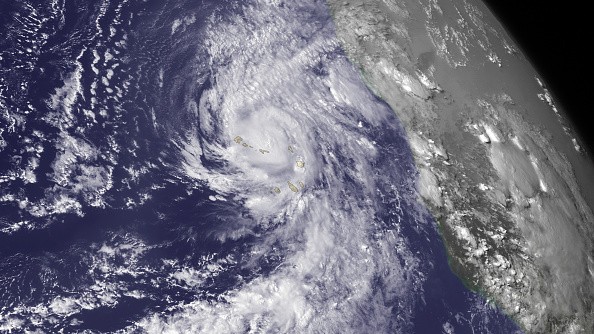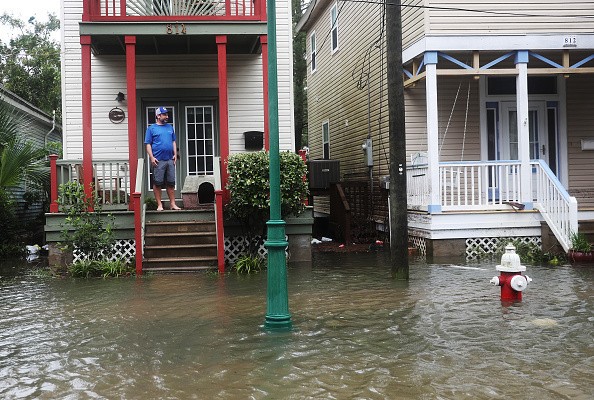Tropical Storm Fred caused devastating floods and tornadoes. On Tuesday, the storm stopped down highways, required water rescues, and wreaked havoc on houses across the Southeast.
Several highways were blocked, and homes were threatened in western North Carolina due to mudslides and floods on Tuesday afternoon and evening.
Workers worked to clear up mud and other debris that swept over Interstate 40 west in Haywood County, west of Asheville. According to the state Department of Transportation, some westbound lanes of the highway were blocked at exit 37.
In the Haywood County community of Canton, a rock retaining wall crumbled into a road.
Immediate Respond

Local authorities immediately dispatched a water team and additional staff from the Asheville Fire Department to the region to assist with water rescues and landslides.
At about 5 p.m., Haywood County Emergency Services issued a warning that the Pigeon River was overflowing its banks.
According to a follow-up, those who require refuge and can drive should go to the county's health and human services facility.
Rushing Rapids
The Nantahala Gorge west of Bryson City was also blocked due to landslides, according to the DOT.
In North Carolina, Evan Fisher, a college student working at the state's climate office, saw the Broad River rise Tuesday evening. The roaring waves of the river, he said, were lapping at the foundations of several dwellings.
According to Sumter County Emergency Management Director Nigel Poole, a tornado near Americus, Georgia, destroyed an estimated 100 houses early Tuesday morning.
"We're looking at everything from small damage to destruction," says the investigator, "Poole told weather.com over the phone. "There's a lot to choose from."
Damages
The majority, if not all, of the damage, according to Poole, was caused by felled trees. The county shared photos to Facebook showing swathes of trees that had been flattened.
Roads were obstructed by trees and toppled power lines, but there were no early reports of injuries or deaths. Americus is roughly 130 miles south of Atlanta in southern Georgia.
Continued Heavy Rain
Heavy rain poured on the metro Atlanta region Tuesday morning as Fred moved northward, flooding numerous roads and even a few of the city's interstate lanes.
According to WSB-TV, whole lanes of interstates 85 and 285 in Atlanta were blocked due to standing water as the flooding increased.
According to PowerOutage.us, more than 27,000 homes and businesses in Florida and Georgia were without power Tuesday morning, but that figure had decreased to fewer than 20,000 by the afternoon. As of 4 p.m. EDT, more than 15,000 outages had been recorded in North Carolina, most of which were in the state's western section.
Strong Winds
With sustained winds of 65 mph, Fred made landfall at Cape San Blas, Florida, around 2:15 p.m. CDT. Following Claudette, Danny, and Elsa, it was the fourth storm to make landfall in the United States this season.
The hurricane has been responsible for one death in Florida. According to WMBB-TV, a 51-year-old Nevada man died when his car hydroplaned on floods and crashed near State Road 22 on Monday night.
On Monday evening, flooding shut down numerous highways in Panama City, Lynn Haven, and Southport.
Bay District Schools, Gulf County Schools, and Washington County Schools in Florida have all stated that they would be closed on Tuesday. In addition, several Georgia and Alabama school districts have also canceled classes on Tuesday.
Declaring a State of Emergency

A state of emergency was issued in 23 Florida counties days before Tropical Depression Fred made landfall. Florida Governor Ron DeSantis declared a state of emergency for the counties of Bay, Calhoun, Citrus, Dixie, Escambia, Franklin, Gadsden, Gilchrist, Gulf, Holmes, Jackson, Jefferson, Lafayette, Leon, Levy, Liberty, Manatee, Okaloosa, Santa Rosa, Taylor, Wakulla, Walton, and Washington on Friday evening.
A state of emergency has also been issued in Transylvania County, North Carolina, ahead of the storm's predicted impact.
Also Read : Powerful Thunderstorms in the Mid-West Can Cause Winds as Strong as Category 2 Hurricane, Forecasters Warn
For more climate and weather updates, don't forget to follow Nature World News!
© 2025 NatureWorldNews.com All rights reserved. Do not reproduce without permission.





